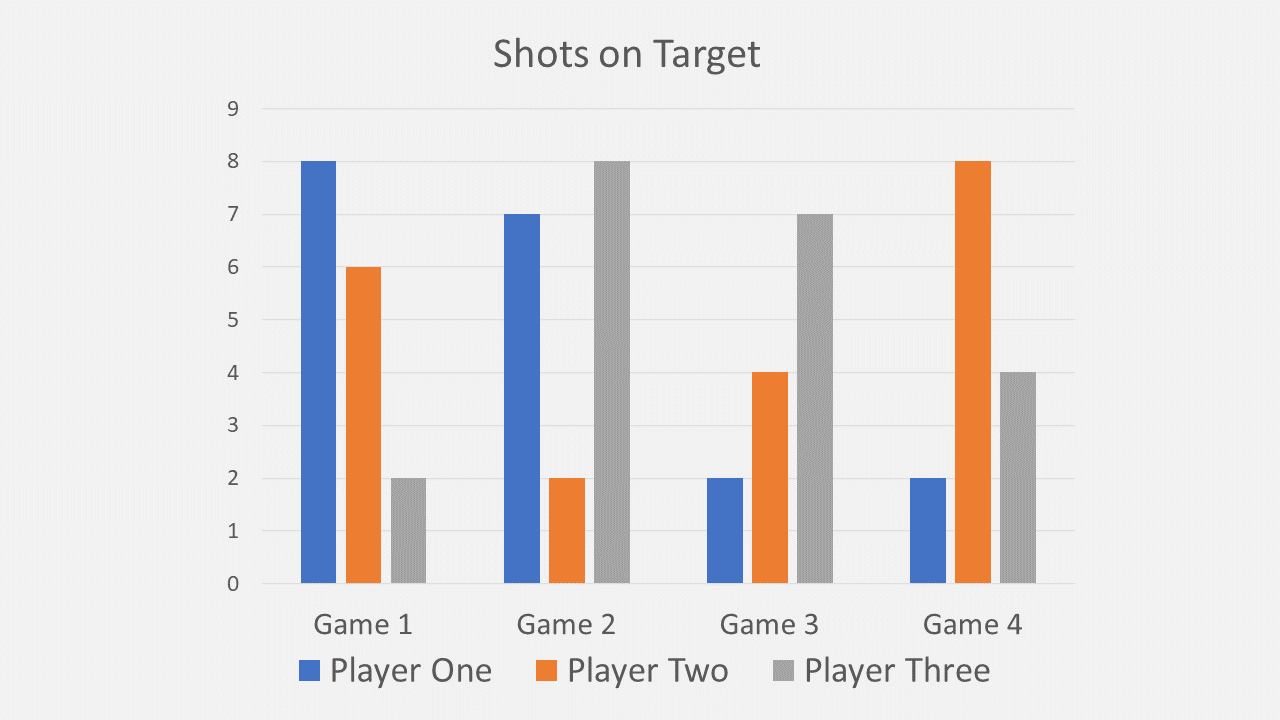A Guide to the SHL Numerical Reasoning Test: Tips and Examples
Updated November 20, 2023
The SHL numerical reasoning test was created by Saville and Holdsworth Limited, an organisation that provides testing for employers by assessing prospective employees' abilities, personalities and behaviours.
Its assessments help employers identify the best future employees with the most potential to positively impact their company.
SHL are one of the largest test providers in the world, so if you’re applying to different companies, you’re likely to come across an SHL test at some point.
SHL tests come in over 30 different languages in over 150 countries. It provides testing at different levels for a range of industries.
The SHL numerical reasoning test is commonly used within the banking and finance industry.
This article will explain the SHL numerical assessment, give you some example questions and share some advice about how to prepare yourself for the assessment.
What Are SHL Tests?
SHL tests provide assessments for various industries and professions, such as IT, sales, banking, and many more.
Its tests are renowned for being some of the most challenging recruitment assessments out there.
The different tests offered by SHL are:
- SHL inductive reasoning test
- SHL Verify G+ Inductive reasoning test (interactive and non-interactive versions)
- SHL deductive reasoning test
- SHL verbal reasoning test
- SHL numerical reasoning test
Businesses that use SHL tests for their recruitment include:
- Barclays
- Marks & Spencer
- Microsoft
- Vodafone
- Danone
Try a Practice SHL Numerical Test on JobTestPrep
The SHL Numerical Reasoning Test
The SHL numerical reasoning test helps employers find the best candidates for highly competitive roles that require a strong understanding of numbers.
The assessment can either be completed online or in an assessment centre.
You’ll be advised as to whether the test is supervised or unsupervised. Many employers prefer to have at least one supervised in-person test before offering a position to a candidate, so be prepared to do this at some point.
The SHL numerical assessment will typically assess your numerical problem-solving skills by testing your use of:
- Multiplication
- Division
- Fractions
- Ratios
- Percentages
It will also test your ability to analyse graphs, tables and charts.
Some tests will permit the use of calculators, while others will not. You’ll be informed before taking the test whether you can use one.
It’s a good idea to practice under the same conditions you’ll be taking the test in, so if you will be allowed to use a calculator, practice with it too. If not, you should try to get used to doing the problems using a pen and paper.
All SHL tests are designed to make cheating practically impossible.
SHL have a huge database of possible questions so that no two candidates will have the same set of questions. This ensures that candidates can’t cheat by accessing a previous test for another applicant.
There are two different types of SHL numerical reasoning tests, which are:
- SHL Verify Interactive – Numerical Reasoning
- SHL Verify Numerical Reasoning Test (multiple choice)
The types have different numbers of questions and time allocated.
SHL Verify Interactive – Numerical Reasoning
This section will require you to answer 10 questions in 18 minutes.
It's the newest and currently the most common SHL numerical reasoning test. It is specifically designed to be taken on your smartphone.
It’s called an ‘interactive’ test because you interact directly with the data or graphs to give your answer, rather than select from given answers or typing in an answer.
It requires you to understand long instructions, analyse the data, make a calculation, then adapt the graph or chart depending on your answer.
SHL Verify Numerical Reasoning Test (Multiple Choice)
Here, you’ll be expected to answer 18 questions in 25 minutes.
This is a more traditional multiple-choice assessment, taken on a computer rather than a smartphone.
You will be presented with a graph or a table and a question about the information contained in it. You choose your answer from a given selection.
SHL Numerical Test Practice Example Questions
SHL Verify Interactive – Numerical Reasoning
In the actual assessment, you would interact directly with the graph shown below. Here, it is displayed as a static image and the changes you would make are explained.

- A pet shop sold 480 rabbits, guinea pigs and hamsters last year.
- Twice as many females were sold as males regardless of animals
- Rabbits accounted for 40% of all sales
- 40% more hamsters were sold than guinea pigs
Arrange the graph to show number of sales made of each each gender and each animal at the pet shop over the past year.


What proportion of shots on targets were from Player One in Game 2 and Game 3?
a) 20%
b) 25%
c) 30%
d) 35%
e) 40%
| USD | EUR | GBP | JBY | CAD | |
|---|---|---|---|---|---|
| USD | 1 | 0.7123 | 0.7892 | 82.621 | 0.9231 |
| EUR | 1.2213 | 1 | 0.7923 | 108.629 | 1.211 |
| GBP | 1.7218 | 1.213 | 1 | 128.104 | 1.6902 |
| JBY | 0.017 | 0.008 | 0.0082 | 1 | 0.0134 |
| CAD | 1.0561 | 0.7134 | 0.5987 | 79.298 | 1 |
Given these conversion rates, how many USD can you purchase for 6,500 EUR?
a) 4,629
b) 7,938
c) 6,745
d) 8,931
SHL Numerical Assessment Scores
The SHL numerical tests are scored comparatively, so there is no strict pass or fail mark.
Therefore, how well you score on the test depends on the quality of the people you were up against.
Generally, a score within the top 20% is high enough for you to progress to the next stage. However, this figure can vary greatly depending on the role and the applicants.
SHL use norm groups to determine your score, where you’ll be compared to people of a similar age, nationality, education level and so on.
Answering questions correctly increases your score. SHL Numerical tests are not marked negatively, so you won’t lose marks for getting questions wrong.
For this reason, you’re always better to take a guess rather than leave answers blank.
You won’t normally be given your score following an SHL test. Employers tend to hold on to this information to avoid potential employees discussing scores.
You can request your score from a test, but it will be the recruiter’s decision whether to share this information or not.
If you need to prepare for a number of different employment tests and want to outsmart the competition, choose a Premium Membership from JobTestPrep.
You will get access to three PrepPacks of your choice, from a database that covers all the major test providers and employers and tailored profession packs.
How to Practise for the SHL Numerical Reasoning Test
Step 1. Do Practice Tests
This isn’t the kind of test you can study or memorise anything for. In fact, many people who have sailed through school and university exams struggle to achieve a high enough score on any psychometric test.
The best way to prepare for any test is to practice. This is particularly true for SHL tests.
While mathematical knowledge is needed to do well, the SHL test is the equivalent of GCSE-level maths.
The hardest part of the test is understanding the question and completing it within the strict time frame. You won't have much time left to check over your answers if you have time to finish them.
For this reason, practice tests ensure you are as prepared as possible by being familiar with the style of questions, helping you to understand and answer them as quickly and as accurately as possible.
You can find practice tests for the SHL numerical assessment on JobTestPrep.
Step 2. Take Time to Understand the Question Format
People are often misled into thinking that any aptitude test questions found online will suffice in preparing for the SHL practice test.
However, it’s essential that you get familiar with the exact format of the SHL tests to ensure your best performance on the day.
Therefore, it is important to use accurate practice questions, available on JobTestPrep and on SHL’s website.
Step 3. Practice Under Exam Conditions
Since timing is the hardest part of the SHL test, it’s beneficial to do your practice tests under exam conditions.
This means you should time yourself, do the practice test in one go and use only the tools allowed to you to complete the test.
If you're allowed to use a calculator in the test, make sure you use it while you practice. It’s recommended to use a good calculator to ensure preciseness. Using a phone calculator with a smaller screen is more likely to result in you making errors.
You’ll also usually always have access to a pen and paper during the test, so try using this too. However, be careful not to waste too much time writing everything down since you won’t have enough time.
Step 4. Identify Your Strengths and Weaknesses
After doing a practice test, go back to check the answers you got correct and which you answered wrong to properly identify your strengths and weaknesses.
Once you’re aware of this, you can focus on practising the areas that require the most.
Step 5. Brush Up on Basic Maths Concepts
The SHL Numerical test isn’t an extremely difficult test in terms of the complexity of the maths.
However, it does test some basic skills that you may have studied many years ago and not used in a while.
Therefore, you should go back and practise skills like multiplication, division, ratios, percentages, algebra and fractions, as these are likely to come up.
Step 6. Read Each Question Carefully
It goes without saying, but don’t be tricked by any confusedly worded question.
Sometimes, not focusing completely on reading a question can lead you to answer it incorrectly.
While speed is important, prioritise reading the question thoroughly to ensure you answer it as well as possible.
Step 7. Answer All the Questions
You won’t be marked down for answering questions incorrectly in the SHL numerical reasoning test, so getting an answer wrong is no different from not answering.
If you make an intelligent guess at an answer, you have a better chance of getting the point for it.
Step 8. Practise Relaxation and Focus Techniques
Many people perform badly on tests because they're overly nervous or anxious.
In the lead-up to the assessment, you should practice techniques to help you relax and improve your focus on the day.
The SHL numerical reasoning test is a psychometric test used by many employers worldwide to assess candidates’ ability to understand, analyse, arrange data and solve complex maths problems.
The difficulty of the SHL numerical reasoning test depends on the roles you’re applying for.
An assessment for an entry role job will be easier than one for a managerial position.
However, while the questions can be complex, you’re not required to have a higher level than GCSE maths.
Preparing for the SHL numerical reasoning test is the best way to ensure you pass or progress to the next level of the job application.
You can find the best SHL numerical test practice here.
Be careful not to waste time practising for a different assessment since it’s essential that you’re familiar with the style of the question in the SHL numerical test.
There is no universal ‘good score’ for the SHL numerical reasoning test.
Scores are given as percentages showing where in your cohort you fall, so generally, a score of 40% to 60% is considered average.
A score in the top 20% is a good score, but being in the top 10% will give you a higher chance of progressing to the next round of the recruitment process.
There are two types of SHL numerical tests with different time limits:
- SHL Verify Interactive numerical reasoning test – 18 minutes
- SHL Verify numerical reasoning test (multiple-choice) – 25 minutes
There are two types of SHL numerical reasoning tests:
- SHL Verify Interactive numerical reasoning test – 10 questions
- SHL Verify numerical reasoning test (multiple-choice) – 18 questions
The best way to ensure you pass the SHL numerical reasoning test is by doing online practice tests.
You can find practice tests for the assessment on JobTestPrep.
It's also good to brush up on your basic maths and practice solving problems quickly under exam conditions.
The SHL numerical reasoning test is designed so that it’s practically impossible to cheat.
SHL have a huge database of possible questions to put in a test, so no two candidates will get the same questions for the assessment.
The best test preparation site for the SHL numerical reasoning test is at JobTestPrep.
You’ll find the most up-to-date and accurate assessment questions, which will put you in the best standing for doing your assessment.
You will likely not receive your results from the SHL numerical test.
Most of the time, employers will hold on to the results of the test and keep them confidential.
Often, the results of tests like these will be kept on record and referred back to if the employee wishes to apply for a promotion in the future.
You may ask for your test results, especially if you have not performed well and wish to improve, but it’s the employers’ decision whether to share them or not.
If the SHL numerical reasoning test you took was conducted in person and supervised, the next stage will most likely be an interview for the role.
If your test was online, you’d likely be invited to an assessment day for the employer to meet you in person and conduct further testing.
You can find study resources for the SHL numerical reasoning test online.
The best way to practice for the test is by doing practice tests and checking the answers you scored correctly and incorrectly.
Most online practice tests will provide you with in-depth SHL numerical test answers you can look over and use to prepare for the real thing.
You can find the best online SHL numerical test practice on JobTestPrep.
Final Thoughts
Sitting any psychometric testing for your dream job is a nerve-racking experience.
The best way to overcome nerves and perform your very best on the big day is by doing as much practice as you possibly can.
The SHL numerical reasoning test is designed to be challenging, but if you’re familiar with the types of questions that come up, you’ll be setting yourself up to pass to increase the chances of landing the job or promotion.






